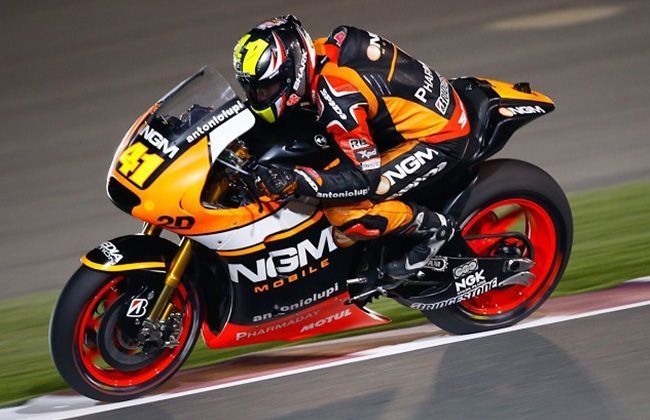Things You Need To Know About MotoGP Bikes
Modified On Dec 1, 2015 By Team Bikedekho
- 2635 Views
MotoGP is something that boosts the adrenaline of any bike lover. MotoGP is something that pushes the passion of biking in the budding riders and the speed lovers who wish to showcase their riding skills on city roads. But, there are various aspects of MotoGP, which clearly distinguish its class and comparing it with production bikes is not possible. Here is a list, which describes clearly why MotoGP bikes are different from the production bikes and what makes these bikes unique in every aspect.

Purpose Built:
The bikes used in Moto GP are purpose built, or we can say is they are true racing bikes that cannot be maneuvered on city roads or even the widest highways. These bikes cannot be purchased by general public and is illegal to ride it on public roads. So, for the ones who wish to ride such bike one has to get trained and has to become a professional Moto GP rider to fulfill their dream.

Engine Capacity:
The teams competing in a MotoGP cannot just fit any engine in their bike to take the lead. The permitted engine displacement is 1000cc with a maximum four cylinder and a maximum bore of 81 mm. Even the two stroke engines are not allowed. Apart from four cylinders, engine displacement, the engines cannot be a turbocharged and cannot possess more than 6 gears.

Material Used:
MotoGP bikes are basically the prototypes of what the company is planning to introduce in near future. The bikes are basically evolved for showcasing the technological and design capabilities of the manufacturer. Most of the bikes are evolved with materials like titanium, carbon fiber, carbon disc brakes, engine management system and traction control to give a better grip on the track.
Hand Built:
The MotoGP bikes are one of their kinds and, therefore, each MotoGP bike is different in its own manner. Each engine of a MotoGP bike is made in a different manner to get maximum results on the track. Once evolved, the engine cannot be tuned at the time of MotoGP and each engine is locked so that teams may not change according to the conditions. So once on the track the bike is dependent on the engineers who have evolved it.
Rare Parts:
For each MotoGP bike, the parts are produced in a limited quantity and these parts are not at all cheap. The reason is that these bikes are custom-made and mass production does not take place like for the regular bikes that are on board for sales, therefore, specific part costs increases dramatically. From which the engine cost is the highest, enhancing the price of the bike around $2 million (INR 1,30,00000).
State-of-the-art Technology:
MotoGp bikes used pneumatic valves, which are specifically designed for race engines. These bikes also have seamless transmissions that not only allows to notch performance but an unmatched riding experience to the rider. These MotoGP bikes are also geared with different sensors that collect information during the race about suspensions, brakes, steering angle and exhaust temperature, which is further downloaded by the team after the race for analysis.
Limited Time Period Of Components:
The components evolved for MotoGP bikes are put under intense pressure during the race and many parts last for only a few hours. These parts include road tyres that are manufactured comparatively soft material that gives improved grip on the road and can withstand higher temperature, which results in a shorter lifespan of these tyres.
MotoGP bikes are evolved after a lot of research and this makes most of these bikes simply priceless for the companies as they design these bikes to take their legacy further in the market. With top speed reaching close to 355 kmph these MotoGP bikes are not only dangerously fast but need high skills to be controlled.
